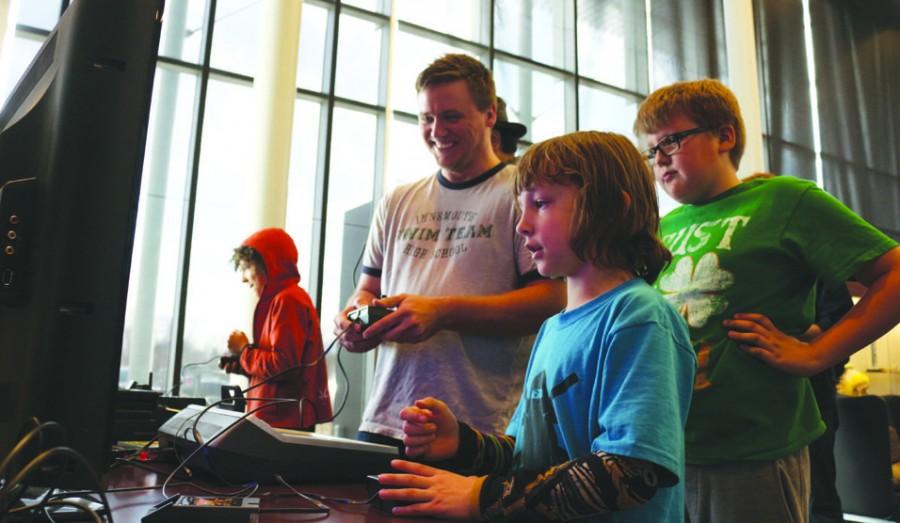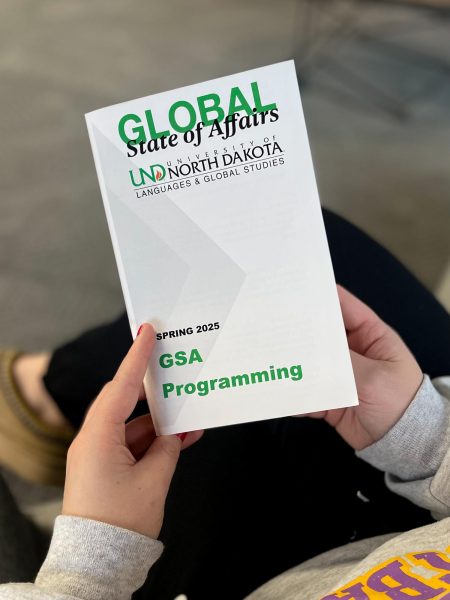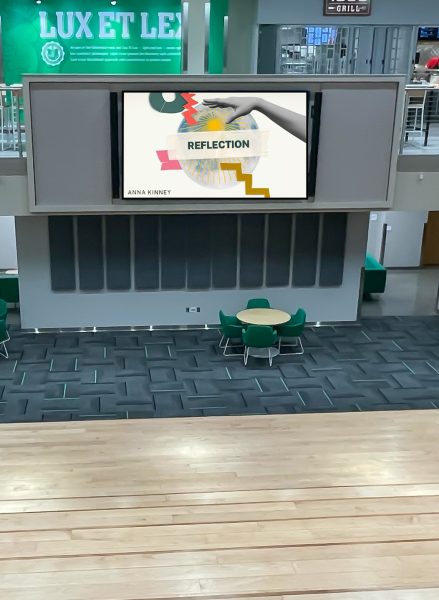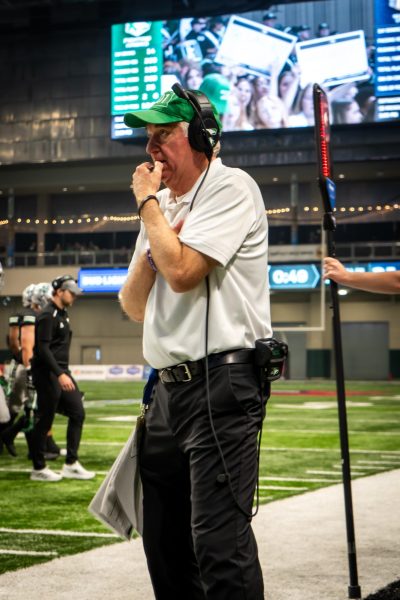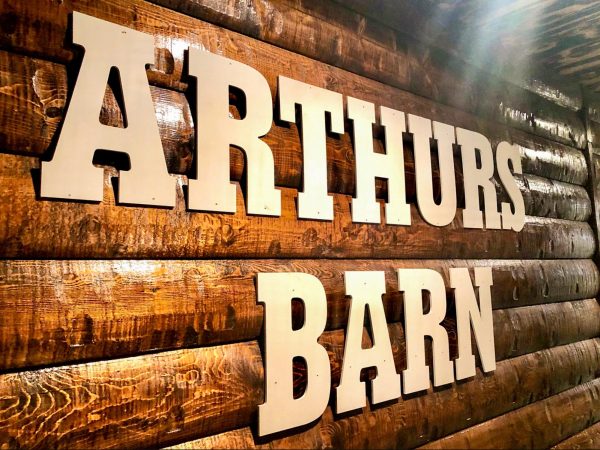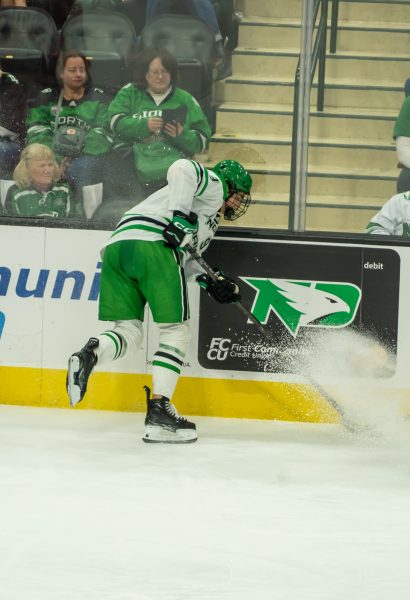Gorecki brings old school video games
Grand Forks community members play Magnavox Odyssey 2 games Thursday at the Gorecki Alumni Center. Photo by Jackson Smith/The Dakota Student.
Beeps played from the speakers of a CRT television Thursday in the Gorecki Alumni Center as children and other guests gathered around to play “E.T.” on the Atari 2600.
As part of the “Atari: Game Over” & Round Table event, Atari Archeologists brought together grand forks community members to celebrate and learn about the Atari game site excavation and speak directly with those that participated in the excavation of the Atari landfill.
Organizers also included a viewing of the documentary “Atari: Game Over,” which tells the story of the dig.
The event set out to give people an experience for older gaming systems.
“A lot of it was giving people an opportunity to become familiar with these gaming consoles, which for a lot of people were the first computers in their homes,” UND history professor Bill Caraher said. “Today we have our cellphones that have more computing power than the Apollo missions, but the first time that we came in contact with computers in our everyday life was really something like Atari.”
The consoles at the event were provided by UND High Performance Computing Specialist Aaron Bergstrom.
Bergstrom has been collecting and programming for Atari since 2005.
“As a programmer and a person who runs the HPC, I think the Atari is just a good example of the basic structure of a computer,” Bergstrom said.
After some time playing games, the documentary “Atari: Game Over,” was shown to the audience.
The excavation took place at a landfill in the town of Alamogordo, N.M. The documentary also told the story of Atari, and how the games ended up in the landfill in the first place.
A panel featuring Caraher, assistant professor Bret Weber, Director of Academic Programs and Research for NDUS Richard Rothaus, Andrew Reinhard of the American Numismatic Society and Stony Brook professor of Culture and Technology Raiford Guins, who all worked as archeologists on the dig.
The panel began by discussing the problems they had with the film — mainly its failure to provide the important archeological context.
“What you don’t see in the documentary is all of the planning and all of the panic that was going on and all of the methods during the excavation — taking the buckets, bringing them over to the table — but that doesn’t make good movies,” Reinhard said. “But there were a lot of interviews too that were supposed to be extras on the Xbox app, but there’s nothing there.”
Despite the many problems the excavation had, it also had its benefits.
“Our goal is to always try to get archeological artifacts into the public view,” Caraher said. “Atari games were never considered in the same way as other archeological artifacts, and so I think archeology had the effect of getting more of these into the public view.”
Alex Bertsch is the opinion editor for The Dakota Student. He can be reached at [email protected].


